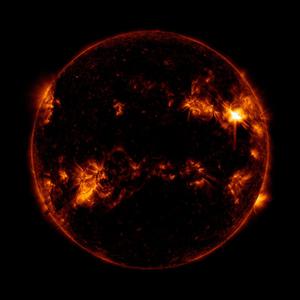Glossary term: 恒星活动
Description: 恒星活动是用于描述磁场对恒星产生的各种影响的总称。拥有强磁场的恒星表面会出现更多星斑。恒星的磁场也可能是其日冕加热的来源,因此具有更强磁场的恒星通常会从日冕发出更多的X射线和紫外线辐射。在恒星光谱中也可以看到活动迹象,尤其是氢-α谱线的发射。这些效应综合起来可以粗略地量化恒星的“活动”程度。质量较大的恒星(光谱类型为O型、B型和早期A型)通常活动较弱。随着恒星质量的降低,活动逐渐增强,并在红矮星(M型矮星)处达到峰值。年轻恒星比老年恒星更活跃。以太阳为例,其活动遵循一个11年的周期,期间黑子的数量会发生变化。
Related Terms:
See this term in other languages
Term and definition status: The original definition of this term in English have been approved by a research astronomer and a teacher The translation of this term and its definition is still awaiting approval
The OAE Multilingual Glossary is a project of the IAU Office of Astronomy for Education (OAE) in collaboration with the IAU Office of Astronomy Outreach (OAO). The terms and definitions were chosen, written and reviewed by a collective effort from the OAE, the OAE Centers and Nodes, the OAE National Astronomy Education Coordinators (NAECs) and other volunteers. You can find a full list of credits here. All glossary terms and their definitions are released under a Creative Commons CC BY-4.0 license and should be credited to "IAU OAE".
If you notice a factual or translation error in this glossary term or definition then please get in touch.
Related Media
太阳黑子
Credit: NASA/SDO/HMI credit link
License: PD Public Domain icons
太阳耀斑
Credit: NASA/SDO credit link
License: PD Public Domain icons










